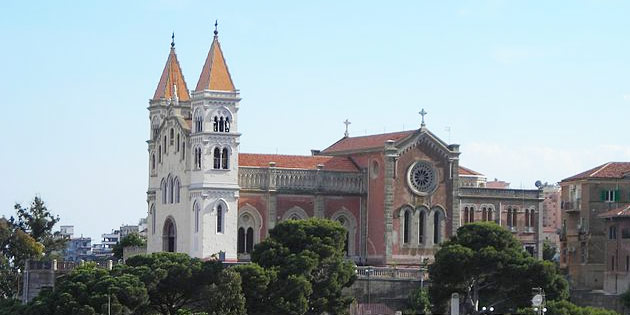Sanctuary of the Madonna di Montalto in Messina

Vito Manzari - CC2.0
The Sanctuary of the Madonna di Montalto, dedicated to the Madonna delle Vittorie , is located in Messina on the Caperrina hill.
The Caperrina hill is called the Campidoglio of Messina in memory of the revolutionary movement of 1282 in which the people of Messina rebelled against the siege of the Angevins during the Sicilian Vespers. During these battles, it is said that the Madonna, under the guise of a White Lady , deflected the arrows of the enemies with her hands and that, with her white clothes, she covered the walls of the city, making them invisible. According to tradition then, in 1294 the Madonna appeared in a dream to a friar and asked to build a church dedicated to her in the very place that was the scene of her prodigious protection of the people of Messina. He also said that the next day a white dove would fly over the battlefield and, with its flight, it would mark the perimeter of the church. On the appointed day, at noon, the Senators and the Archbishop saw what the Virgin had foretold manifested itself. Following this event, the Messina Senate purchased the land to erect the sanctuary which, as soon as construction was completed, was dedicated to the Blessed Virgin of Montalto. This episode is represented by one of the automata of the Messina Cathedral clock . The sanctuary was entrusted to the nuns who, after 1389, built a monastery next to it and introduced the cult of the Madonna di Montalto. The entire complex was destroyed by the earthquake of 1908 and then rebuilt in 1911 on the original structure. In 1928, according to the design of the architect Francesco Valenti, an extension work was carried out which involved the demolition of the apse and the facade. On this occasion the two parts practically inverted their position and today the church, with its entrance door and the two spire bell towers, faces the city.
You can also enjoy the view from the square in front of this church. on the Strait of Messina, praised by Pope John Paul II during his visit to the city in 1988. In memory of that moment, a life-size statue depicting the Polish pontiff was placed on the belvedere veranda while admiring the splendid view of the city .


